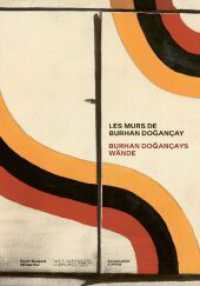- ホーム
- > 洋書
- > 英文書
- > Architecture
Full Description
This handbook, representing the collaboration of 40 scholars, provides a multi-faceted exploration of roughly 6,000 years of Chinese architecture, from ancient times to the present.
This volume combines a broad-spectrum approach with a thematic framework for investigating Chinese architecture, integrating previously fragmented topics and combining the scholarship of all major periods of Chinese history. By organizing its approach into five parts, this handbook:
Traces the practices and traditions of ancient China from imperial authority to folk culture
Unveils a rich picture of early modern and republican China, revealing that modernization was already beginning to emerge
Describes the social, intellectual, ideological, and formal enterprises of socialist architecture
Frames a window on a complex and changing contemporary China by focusing on autonomy, state practices, and geopolitics of design, ultimately identifying its still evolving position on the world stage
Examines the existing cultural and political theories to highlight potential avenues for future transformations in Chinese architecture that also retain Chinese identity
Providing a pioneering combination of ancient and modern Chinese architecture in one coherent study, this book is a must-read for scholars, students, and educators of Chinese architecture, architectural history and theory, and the architecture of Asia.
Contents
Introduction 1. Reassembling for a Chinese Architecture: Notes for a New Departure PART I: ANCIENT AND DYNASTIC TRADITION State Governance Over Building and City Planning 2. The Chinese City in the Service of the State 3. Typical Design Features of Ming Palaces and Altars in Beijing 4. Imperial Cities: Critical Changes in Urban Paradigm from Sui-Tang to Song 5. Yingzao Fashi: The Book and Methodical Issues for Studying It Literati Culture and Social Production 6. Literati Gardens of the Jiangnan Region: Characters and Mutations 7. Cang Lang Pavilion of Suzhou: Sentiment, Scenery, Aura, and Meaning 8. Landscape Urbanism: Urban-Rural Relations in Hangzhou of Southern Song China 9. Confucian Authority: Analysis of School-Temples at Imperial Academy of Beijing Folk Culture and Vernacular Practice 10. Fengshui Practice and Urban Development in Ancient China: An Outline 11. Yang Yunsong and the Jiangxi School of Fengshui Practice in Southern China 12. Carpentry In Vernacular Building Practice: The Master's Way 13. Vernacular Architecture: Themes and Variations Over a Large Country. PART II: REPUBLICAN AND EARLY MODERN TRANSFORMATION The Arrival of "Architecture": Profession, Knowledge, and Education 14. Emergence of "Architecture": In the Reform Years of Late Qing Dynasty 15. The Architect as a Profession in Republican China: Rising Under the State Modern Building Practice: Style and Technology 16. Building Technology in Republican China and Its Historical Legacies 17. Chinese Classical Revival: Nanjing, Capital of Republican China (1910s-40s) Modern City Construction and Spatial Formation 18. From Hankou Town to Greater Wuhan: Urban Spatial Organizations in Early Modern China 19. Modern Edutainment Space: Public Parks in Early Twentieth-Century China PART III: SOCIALIST-MAOIST MODERNIZATION Spatial Construction and City Planning Under Socialist Ideology 20. Socialist Urban Planning in Mao's China (1949-1976) 21 Danwei and Socialist Urbanism Practice, Education, and Knowledge Production 22. The Design Institute in Mao's China (1950s-70s) 23. Architectural Education in China (1950s-1980s): Constructing and Deconstructing 24. Theories of Spatial Composition: Design Knowledge in China up to the 1980s 25. Liang and Liu: Strategies for Writing an Architectural History in the 1950s Architecture in Socialist China: Nationalism and Modernism 26. National Style: Thinking and Building for a New Republic in Beijing (1949-1959) 27. Towards a Regional Modernism in Chinese Architecture (1930s-70s) 28. For a Modernism: Huang and Feng at Shanghai's Tongji Architectural Programme 29. Building Canton Fair: Towards a Regional Modernism in Southern China (1950s-1980s) PART IV: CONTEMPORARY HISTORIES: CHINA IN THE WORLD Architects and the Issue of Autonomy 30. Critical Pragmatism: Architects as Refl exive Individuals in Contemporary China 31. Architects as Authoring Individuals: Y. H. Chang, Liu Jiakun, and Wang Shu State Design Institutes in the Reform Era 32. From Mao to Market: Evolution of the State Design Institutes in China 33. The Chinese Design Institute: A Critique of "Critical Thinking" CBDs: Global Spectacles 34. Objects in Territories Along Avenues: Spatial Planning in Beijing and Shanghai 35. Iconic Architecture in China (2000s): Historical Reading or Marxist Critique 36. Urban-Rural Development in China and a Way Forward With "New Urbanization" Geopolitical Differentiations 37. "Chinese Cultural Renaissance" and a Chinese Neoclassicism: Taiwan (1960s-80s) 38. Architects as Reflexive Individuals: Taiwan and Hong Kong Since the 1950s PART V: THEORIZATION Culture and Epistemology 39. Ten Lamps of Architecture in Chinese Culture 40. Deriving Architectural Theory From Chinese Philosophy: ThinkingWith Xunzi 41. Figuration: Writing, Memory, and Cities in Chinese Culture 42. Signs of Empire: Scale and Statehood in Chinese Culture Political Ethics 43. The State Function of Architecture 44. Political Space and Moral Statehood Methodology 45. Studies on Architecture of Ancient China: As in Part I 46. Perspectives on Architecture of (Modern) China: As in Parts II-V and Part I Appendix Timeline: Chinese History







